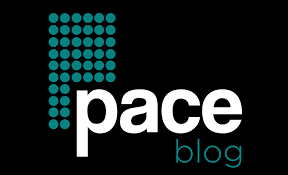Embarking on the entrepreneurial journey often brings visions of hefty investments, large office spaces, and hefty marketing budgets. However, in today’s digital age, many successful businesses have been born out of modest beginnings, emphasizing resourcefulness and strategic spending. If you’re considering starting a business on a shoestring budget, here’s a roadmap to guide you courtesy of paceofficial.com.

1. Focus on Your Core Strengths
When capital is limited, it’s essential to begin by focusing on your strengths. Instead of diversifying and attempting to offer multiple products or services, streamline your offerings. This concentration not only reduces initial expenses but also helps in building a niche brand reputation faster. As the business grows, you can expand your offerings. Additionally, by narrowing your focus, you can better serve a specific target audience, ensuring customer satisfaction and loyalty.
2. Embrace Digital Platforms
Today, the digital realm has democratized entrepreneurship. Websites can be set up inexpensively using platforms like WordPress, Wix, or Shopify. These platforms often come with easy drag-and-drop features, eliminating the need for hiring a professional developer. Social media platforms, such as Instagram, Facebook, and LinkedIn, are free to use and can be harnessed as powerful tools to reach potential customers. Also, online marketplaces like Etsy or Amazon can provide additional platforms for selling products. These platforms often have built-in audiences, simplifying customer acquisition.
3. Work from Home or Shared Spaces
The dream of a posh office can wait. Starting from home or opting for co-working spaces can dramatically reduce overheads. Not only does this approach save on rent, but it also cuts down on commute expenses and the cost of setting up a professional workspace. As the business grows, you can consider moving to a dedicated office space. Being flexible with your working environment also allows you to adapt quickly to changing circumstances and business needs.
4. DIY and Learning
While it’s essential to recognize areas where professional help is indispensable, the early stages of business are also a time to wear many hats. There’s a wealth of information online. Whether it’s basic accounting, graphic design, or content writing, consider taking online courses or referring to tutorials to manage some tasks yourself. Continual learning not only saves costs but also empowers you with diverse skills, enhancing your business adaptability.
5. Low-cost Marketing Ideas
Marketing doesn’t always have to burn a hole in your pocket. Here are some low-cost marketing strategies for businesses on a tight budget:
- Content Marketing: Regularly publishing relevant content on your blog or website can position you as an expert in your field. It also improves search engine rankings, increasing organic traffic to your site. Consistent content also helps in retaining customer interest and ensures repeat visits.
- Social Media Engagement: Consistently posting and engaging with followers on social media platforms can boost brand visibility. Conducting polls, Q&A sessions, or even live videos can foster community engagement. Engaging content, when shared by followers, can exponentially increase your reach without any additional cost.
- Collaborations and Partnerships: Partner with complementary businesses or influencers. This can be in the form of shout-outs, guest posts, or joint webinars, allowing you to tap into their audience base without significant monetary investment. Mutually beneficial partnerships can also lead to shared resources and expertise, amplifying your marketing efforts.
- Email Marketing: Building an email list and sending out newsletters is a powerful tool to keep your audience informed and engaged. Platforms like Mailchimp offer free tiers for small businesses, making this a cost-effective option. Personalized email campaigns can result in higher conversion rates and foster customer loyalty.
- Attend Local Events or Host Workshops: The cost is often minimal, and the face-to-face interaction is invaluable. These events also provide valuable feedback and insights into customer preferences and concerns. When attending such events, professionally designed brochures can make a lasting impression on your audience. Consider using an online brochure maker to design eye-catching materials without breaking the bank. This not only conveys your business information efficiently but also positions your brand as polished and professional.
6. Lean Inventory Management
For businesses dealing with physical products, inventory management can be a significant expense. Adopting a lean inventory system, like dropshipping or just-in-time inventory, can help in reducing upfront costs. You only purchase stock when there’s a confirmed order or just before you expect a demand, reducing storage costs and the risk of unsold stock. Proper inventory management also ensures faster delivery times, leading to better customer satisfaction. Analyzing sales data can further refine your inventory decisions, ensuring optimal stock levels.
7. Seek Out Free or Open-source Software
Before investing in premium software, look for free or open-source alternatives. Whether it’s graphic design, project management, or accounting, there are numerous quality software options available at little to no cost. Open-source communities also offer support through forums and documentation, facilitating smoother software adoption. Plus, many of these tools can be customized to better fit your business needs.
8. Reinvest Profits
Lastly, as you start earning, consider reinvesting a substantial portion of the profits back into the business. This strategy aids in fuelling growth without relying on external funding. Reinvestment can be channeled into areas like research and development, marketing, or expanding your product line. This ensures that your business remains competitive and continues to evolve with market demands.

Starting a business on a shoestring budget is not only possible but, in many cases, can be an advantage. Limited resources often nurture creativity, innovation, and resilience, core tenets of successful entrepreneurship. By focusing on strategic spending, leveraging digital tools, and embracing low-cost marketing, you can lay a robust foundation for your business dreams. Every penny saved and wisely invested takes you one step closer to your entrepreneurial vision. Embrace the journey with patience, passion, and persistence.

